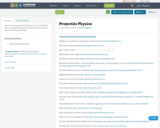
This is a resource page for Physical Science and Physics. This is a compiled list made over the years of teaching Physical Science and Physics.
- Subject:
- Physical Science
- Material Type:
- Activity/Lab
- Date Added:
- 04/06/2018

This is a resource page for Physical Science and Physics. This is a compiled list made over the years of teaching Physical Science and Physics.

CK-12 Physical Science Concepts covers the study of physical science for middle school students. The 5 chapters provide an introduction to physical science, matter, states of matter, chemical interactions and bonds, chemical reactions, motion and forces, and the types and characteristics of energy.

Fill in the blank peardeck presentation
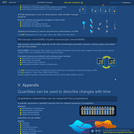
In the first video segment, we describe the fundamental postulate of statistical mechanics. The direct product notation we introduce in the second segment helps us to discuss the states available to a collection of many parts, which helps us, in turn, to derive the Boltzmann factor in the third segment. The fourth video segment explains how the Boltzmann factor helps us to calculate average properties for systems in thermal contact with large baths and introduces entropy (Greek letter sigma), free energy (F), and the partition function (Z).

Short Description:
This is a textbook for life science students. It is calculus based. The author, Jennifer Kirkey, used material from a variety of Open Stax books. It is organized such that topics are introduced conceptually with a steady progression to precise definitions and analytical applications.
Long Description:
This is a textbook for life science students. It is calculus based. The author, Jennifer Kirkey, used material from a variety of Open Stax books. College Physics is organized such that topics are introduced conceptually with a steady progression to precise definitions and analytical applications. The analytical aspect (problem solving) is tied back to the conceptual before moving on to another topic. Each introductory chapter, for example, opens with an engaging photograph relevant to the subject of the chapter and interesting applications that are easy for most students to visualize.
Word Count: 253276
(Note: This resource's metadata has been created automatically by reformatting and/or combining the information that the author initially provided as part of a bulk import process.)

Physical Geology is a comprehensive introductory text on the physical aspects of geology, including rocks and minerals, plate tectonics, earthquakes, volcanoes, glaciation, groundwater, streams, coasts, mass wasting, climate change, planetary geology and much more. It has a strong emphasis on examples from western Canada, especially British Columbia, and also includes a chapter devoted to the geological history of western Canada. The book is a collaboration of faculty from Earth Science departments at Universities and Colleges across British Columbia and elsewhere.
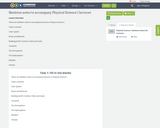
These are skeleton notes to accompany lectures in Physical Science I.Topics covered:Solar SystemRocks and MineralsBuilding Earth's Surface: Folds and FaultsTsunamisThe AtmosphereThe HydrosphereWeatherClimate
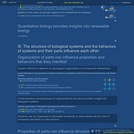
Biological systems (e.g. cells) can make stochastic transitions between phenotypes (e.g. states of relatively increased or decreased drug resistance). This means that an initially drug-sensitive population can generate relatively drug-resistant subpopulations. This video presents a metronomogram, which is a tool for understanding whether such stochastic transitions can provide an opportunity for therapeutic treatment. Citation: Liao D, Estevez-Salmeron L, and Tlsty TD (2012) "Conceptualizing a tool to optimize therapy based on dynamic heterogeneity," Phys. Biol. 9:065005.
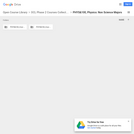
This is a course for non-science majors that is a survey of the central concepts in physics relating everyday experiences with the principles and laws in physics on a conceptual level. Upon successful completion of this course, students will be able to: Describe basic principles of motion and state the law of inertia; Predict the motion of an object by applying Newtonęs laws when given the mass, a force, the characteristics of motion and a duration of time; Summarize the law of conservation of energy and explain its importance as the fundamental principle of energy as a law of nature; Explain the use of the principle of Energy conservation when applied to simple energy transformation systems; Define the Conservation of Energy Law as the 1st Law of Thermodynamics and State 2nd Law of Thermodynamics in 3 ways; Outline the limitations and risks associated with current societal energy practices,and explore options for changes in energy policy for the next century and beyond; Describe physical aspects of waves and wave motion; and explain the production of electromagnetic waves, and distinguish between the different parts of the electromagnetic spectrum.
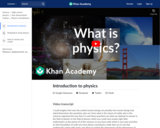
An overview of what physics is about as we delve deeper in future videos. How physics is related to math, the other sciences, and the world around us.

THE PATTERNS APPROACH
The Patterns Approach to science instruction emphasizes the use of mathematical and phenomenological patterns to predict the future and understand the past. Students construct science knowledge by making an initial “wild-guess”, asking questions, planning and conducting experiments, collecting data, finding a mathematical model that fits their data, explaining the phenomenon based on that model, then finally making a data-informed prediction. Harnessing their own experiences, students compare and contrast low-evidence predictions (wild guesses) to their data-informed prediction to live the experience and learn the value of evidence-based reasoning. Additionally, students engage in several engineering projects in each course, where they must use the Patterns they discover in their designs to optimize their solutions. The Patterns Approach utilizes technology, student-constructed knowledge, frequent opportunities for student talk, and language supports to ensure the engagement and success of every student. By emphasizing, rather than removing, the mathematical connections to science, the Patterns Approach supports student conceptual understanding by connecting real-world inquiry experiences, graphical representations, and mathematical representations of science phenomena.
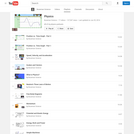
Series of videos that can be used in a Physics class created by Paul Anderson- Bozeman Science

This introductory, algebra-based, two-semester college physics book is grounded with real-world examples, illustrations, and explanations to help students grasp key, fundamental physics concepts. This online, fully editable and customizable title includes learning objectives, concept questions, links to labs and simulations, and ample practice opportunities to solve traditional physics application problems.
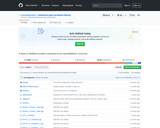
Almost all of the problems in the 2017 edition of OpenStax College Physics have been coded into the WeBWorK software. Physics instructors are free to use these problems in creating homework assignments in their physics courses.
https://github.com/santodagostino/webwork-open-problem-library

Short Description:
This a physical science text intended for non-science majors that covers introductory chemistry and physics topics. The work is adapted from Chemistry: Atoms First 2e https://openstax.org/details/books/chemistry-atoms-first-2e and College Physics https://openstax.org/details/books/college-physics
Word Count: 29934
(Note: This resource's metadata has been created automatically by reformatting and/or combining the information that the author initially provided as part of a bulk import process.)
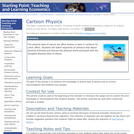
This activity promotes the learning of basic physics principle by viewing cartoon videos where these principles are bent of broken.

The Integrated Conceptual Science Program Course 1 Integrated Physics and Chemistry is a three dimensional course based on the Conceptual Progression Model of the Next Generation Science Standards. It is designed to be used as part of a three course program that addresses all high school science performance expectations. Course 1 is designed for ninth grade students.
This resource includes the teacher materials, supporting documents, and short videos to support teachers in using the materials.
The Courses were designed using the Ambitious Science Teaching (AST) framework. It is strongly encouraged that before using these materials that you be familiar with AST. We suggest that you watch the AST Overview short video found here: https://datapuzzles.org/ambitious-science-teaching and explore this Google Slide deck that contains many resources designed to further your understanding of AST: https://docs.google.com/presentation/d/1WOUVmlm636_7i2l0GYa9JkX1TCK3NMdySfpxKN7IM7A/edit?usp=sharing
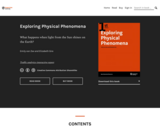
What happens when light from the Sun shines on the Earth?
Short Description:
This course is intended for prospective and practicing elementary and middle school teachers. By exploring physical phenomena in class, you will learn science in ways in which you are expected to teach science in schools or in informal settings such as afterschool programs, youth group meetings, and museum workshops. This course also is appropriate for general science students and others interested in exploring some of the physical phenomena underlying global climate change. Data dashboard
Word Count: 178063
(Note: This resource's metadata has been created automatically by reformatting and/or combining the information that the author initially provided as part of a bulk import process.)
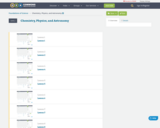
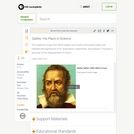
Einstein called Galileo the "father of modern physics." This media-rich essay from the NOVA Web site looks at Galileo's quest to understand the mathematics of motion.